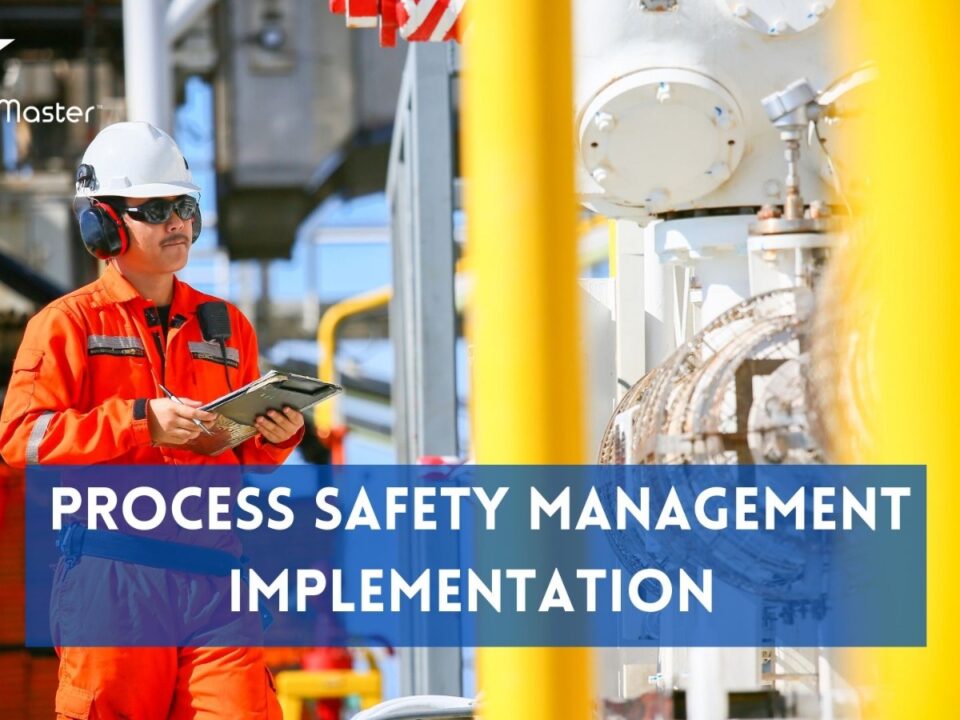The Hazop Study Process: Step-by-Step Approach with Examples

The Importance of Arc Flash Studies in Industrial Settings
June 2, 2023
Safeguarding Industrial Processes: The Basics of Safety Integrity Levels
June 5, 2023The Hazop Study Process: Step-by-Step Approach with Examples
In this article, we will guide you through the Hazop study process, a crucial tool for identifying potential hazards and risks in industrial processes. We will take you step-by-step through the process, providing you with practical examples and detailed explanations along the way. By the end of this article, you will have a thorough understanding of how to conduct a Hazop study and the benefits it can provide. Whether you are a safety professional or someone seeking to improve your knowledge of industrial safety, this article is for you. So, let’s get started!
Introduction
Every industry that involves complex processes poses risks, and it is essential to identify potential hazards and risks before they cause harm. One approach commonly used in industries such as oil and gas, chemical, and pharmaceuticals is Hazard and Operability (HAZOP) study. This method aims to identify potential hazards and operability problems that may arise from deviations in a process. In this article, we will explore the HAZOP study process through a step-by-step approach with examples from different industries. We’ll also highlight the importance of HAZOP studies, the benefits of conducting them regularly, the team members involved in the study process, and how it can help prevent hazardous incidents from occurring in the workplace.
Importance and Benefits of HAZOP Study
The importance and benefits of HAZOP study cannot be overstated. HAZOP study is a structured and systematic approach to identify potential hazards in industrial operations. The HAZOP study process is critical for ensuring the safety of workers, preventing accidents, and minimizing environmental pollution.One of the central benefits of HAZOP study is that it enables organizations to identify potential hazards before they occur. By identifying these hazards proactively, organizations can take steps to prevent them from happening or mitigate their impact if they do occur. This approach helps to minimize downtime, reduce costs associated with accidents, and improve overall operational efficiency.
Another significant benefit of HAZOP study is that it promotes collaboration among team members. The process requires input from various stakeholders, including engineers, operators, maintenance personnel, and safety professionals. By involving these stakeholders in the process, organizations can leverage their diverse expertise and perspectives to identify potential hazards more effectively. This collaborative approach also fosters better communication among team members and improves overall teamwork within an organization.
HAZOP Study Team Members
HAZOP Study Team MembersA HAZOP study team is formed to undertake the hazard and operability study. The team comprises of subject matter experts from various fields, including process engineers, instrumentation and control engineers, safety engineers, and operators. The team combines their knowledge to identify potential hazards in the plant operations.
The process engineer is responsible for leading the HAZOP study team. He provides a detailed description of the process under consideration and helps identify potential deviations from normal operating conditions. The instrumentation and control engineer also play a crucial role in identifying potential hazards associated with instrument failures or misinterpretation of sensor readings.
The safety engineer identifies risks that may arise during plant operations that could result in harm to personnel or damage to equipment or the environment. The operator’s contribution is also critical as they have practical experience with operating equipment. Ultimately, the HAZOP study team members work together to ensure that all potential hazards are identified, evaluated, and recommendations made to mitigate them effectively.
Step 1: Defining the Study Objectives and Scope
The first step in the HAZOP study process involves defining the study objectives and scope. This step is crucial as it sets the foundation for the entire study. The team should identify what they hope to achieve through the HAZOP study and outline their goals in detail. It is essential to define the boundaries of the system being studied and determine which equipment, processes or procedures will be included in this analysis.It’s important to consider all aspects of safety while defining objectives and scope of HAZOP studies. These studies have an enormous impact on employee safety as well as overall project success rates. Successful completion of this step sets up future progress for identifying hazards that need urgent attention for mitigation before they can cause actual harm or damage.
The focus should be on setting realistic expectations with a comprehensive understanding of what is necessary to accomplish these goals during this phase of work with a keen eye for potential pitfalls that could occur in subsequent phases if not addressed early on.
Step 2: Developing a Process Flow Diagram
Once the study objectives and scope have been defined, the next step is to develop a process flow diagram. This step involves creating a graphical representation of the system under consideration, which includes all the equipment, instruments, and control systems. The process flow diagram is an essential tool that helps to identify the sequence of events and potential deviations in the system.The process flow diagram should be developed with input from all relevant stakeholders, including operators, maintenance personnel, engineers, and safety professionals. The diagram should include sufficient detail to enable a thorough analysis of the system. It should also be reviewed and updated regularly to ensure that it remains accurate and current.
Developing a process flow diagram can be challenging because it requires an understanding of complex systems and processes. However, with careful planning and collaboration among team members, this step can be completed efficiently and effectively. A well-developed hazop process flow diagram is critical for conducting a comprehensive HAZOP study that identifies potential hazards and proposes effective risk mitigation measures.
Step 3: Identifying the Process Parameters and Deviations
In this step, the HAZOP team identifies the process parameters and deviations that need to be analyzed. These parameters include all the variables that can influence the process operation, such as temperature, pressure, flow rate, levels, and composition. The team also considers any changes in equipment design or process conditions that may affect the process.The identification of deviations is a critical part of the HAZOP study. Deviations are any changes in the process parameters that could lead to unsafe or undesirable conditions. The team evaluates each parameter to determine what could go wrong and how severe it could be. They consider all possible scenarios and assess each deviation’s likelihood of occurring.
To aid in the identification of deviations, a systematic approach using guide words is applied. These guide words provide a structured way to consider each parameter’s potential deviation systematically and comprehensively. Guide words can be positive (more than), negative (less than), or present (no). By applying these guide words to each parameter in turn, they identify every possible deviation affecting that parameter.
Step 4:Assessing the Consequences of Identified Deviations
In Step 4 of the HAZOP study process, the consequences of identified deviations are assessed. This involves determining the potential impact of each deviation on the entire system and not just on the specific component where it occurs. The assessment should consider both immediate and long-term consequences, as well as potential safety hazards and environmental impacts.During this step, it is important to gather information from subject matter experts to fully understand the risks associated with each deviation. The team should also consider any potential interactions between deviations and assess their cumulative effects on system performance.
Ultimately, the goal of assessing consequences is to identify potential scenarios that could result in a loss of production, equipment damage or failure, or harm to personnel or the environment. By understanding these scenarios in advance, actions can be taken to prevent them from occurring or minimize their impact if they do occur.
Step 5: Developing Recommendations and Action ItemsNow that the process parameters and deviations have been identified and assessed for their potential consequences, it is time to develop recommendations and action items. The objective of this step is to create a clear set of instructions that will mitigate the risks associated with the identified deviations.
The recommendations should prioritize the most significant deviations, taking into consideration their impact on safety, environmental compliance, and production efficiency. The action items should be specific, measurable, achievable, relevant, and time-bound (SMART). They should also include responsibilities for implementation and follow-up.
It is important to involve all HAZOP study team members in the development of recommendations and action items to ensure their buy-in. With a well-defined set of instructions in hand, the organization can take steps toward implementing them promptly while monitoring progress.
Examples of HAZOP Study in Different Industries
Examples of HAZOP Study in Different Industries:The HAZOP study process is widely used across various industries including chemical, manufacturing, pharmaceuticals, oil and gas, and many others. In the chemical industry, for instance, it is common practice to use HAZOP studies during the design phase of a new facility or when modifying an existing plant. This serves as an effective tool to identify potential hazards and associated risks that may arise from the chemicals used in various processes.
In the manufacturing industry, HAZOP studies are employed to evaluate safety risks associated with machinery and equipment during use, maintenance and repairs. By identifying potential deviations in machine performance or process operations early on through a HAZOP study process, manufacturers can take necessary steps to minimize hazards and improve overall safety standards within their facilities.
Another area where HAZOP studies are utilized is the pharmaceutical industry. These studies are conducted during the development stage of new drugs or therapeutic products to identify any possible risks or deviations that may affect patient safety or drug efficacy. By identifying these factors early on through a systematic approach like HAZOP studies, pharmaceutical companies can ensure that their products are safe and effective for use by patients across different demographics.
Conclusion
In conclusion, the HAZOP study process is a critical tool in the field of process safety management. It helps identify potential hazards and deviations in the design and operation of processes, leading to the development of effective recommendations and action items to mitigate risks. Having a well-trained and experienced HAZOP team is essential for ensuring successful outcomes. With an increasing emphasis on safety in various industries, it is important that organizations prioritize this process to protect their employees, assets, and reputation. By following this step-by-step approach with examples from different industries, organizations can ensure that their processes are safer and more efficient for all involved.
At TSM TheSafetyMaster Private Limited we offer following services
TSM TheSafetyMaster® Private Limited
DUST EXPLOSION HAZARD ASSESSMENT
ELECTROSTATIC HAZARD ASSESSMENT
Unit No 221-451-452, SPL1/J, 2nd & 4th Floor, Sunsquare Plaza Complex, RIICO Chowk, Bhiwadi 301019, Rajasthan, India
Phone: +91 1493 22 0093
Mobile: +91 7665231743/9413882016
Email: info@thesafetymaster.com




